International Symposium on Interaction Between Eurasian Steppe and Oasis Corridors Held at Lanzhou University
On September 11-13, 2024, the International Symposium on Interaction Between Eurasian Steppe and Oasis Corridors was held at Lanzhou University. Experts and scholars from China, France, the United Kingdom, Germany, Iran, and Mongolia gathered to engage in in-depth discussions around the theme "Interaction Between Eurasian Steppe and Oasis Corridors." The symposium was jointly organized by Lanzhou University, the Institute of Tibetan Plateau Research of the Chinese Academy of Sciences, the Gansu Provincial Institute of Cultural Relics and Archaeology, the Trans-Eurasian Exchange and Silk Road Civilizations Alliance (ATES), and the Environmental Change and Environmental Archaeology Professional Committee of the Geographical Society of China. It was hosted by the School of Earth and Environmental Sciences at Lanzhou University, the Key Laboratory of Western Environmental Education under the Ministry of Education, and the Northwest and Central Asia Environmental Archaeology Center. The conference was co-chaired by Professor Ma Minmin from the School of Earth and Environmental Sciences at Lanzhou University and Dr. Liu Ruiliang from the British Museum.
The opening ceremony of the conference was presided over by Professor Ma Minmin. Attendees included Chen Fahu, Academician of the Chinese Academy of Sciences, Researcher at the Institute of Tibetan Plateau Research, and President of ATES; Wei Yanfei, Deputy Director of the Gansu Provincial Institute of Cultural Relics and Archaeology; Ailikun, Director of the ATES Secretariat and Researcher at the Institute of Tibetan Plateau Research; Chi Gang, Director of the Office of International Cooperation and Exchange at Lanzhou University; Shi Zhaojun, Party Secretary of the School of Earth and Environmental Sciences at Lanzhou University; and Dean Li Yu. Both Academician Chen Fahu and Dean Li Yu delivered welcoming speeches.
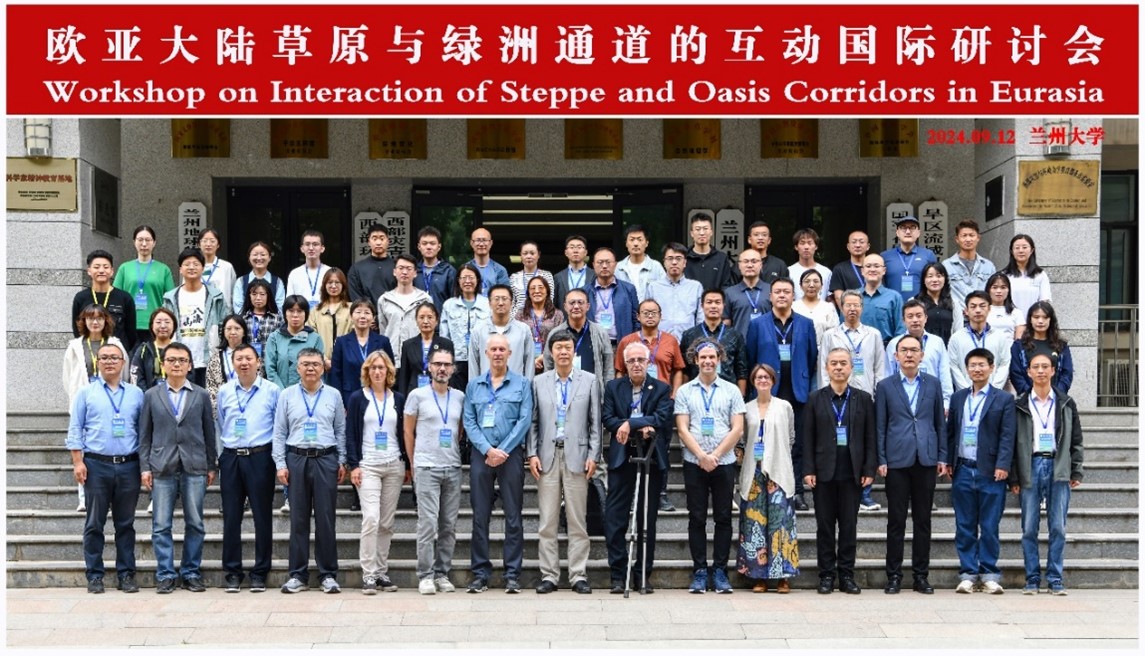
Group Photo
In his speech, Academician Chen Fahu emphasized the significance of research on the interaction between the Eurasian steppe and oasis corridors, highlighting its profound impact on the evolution of human civilization. He underscored the importance of international collaboration and interdisciplinary research in this field, which holds key implications for understanding the history of human interaction and the development of Silk Road civilizations since the Neolithic period. Over the years, the environmental archaeology research teams at Lanzhou University and the Institute of Tibetan Plateau Research have made significant breakthroughs, thanks to extensive international cooperation and a deep-rooted scientific spirit. To further advance international cooperation, Academician Chen Fahu led the establishment of ATES in 2019, aimed at fostering multidisciplinary research on the evolution of Silk Road civilizations and enhancing the understanding of the interplay between environmental changes and trans-Eurasian exchanges.
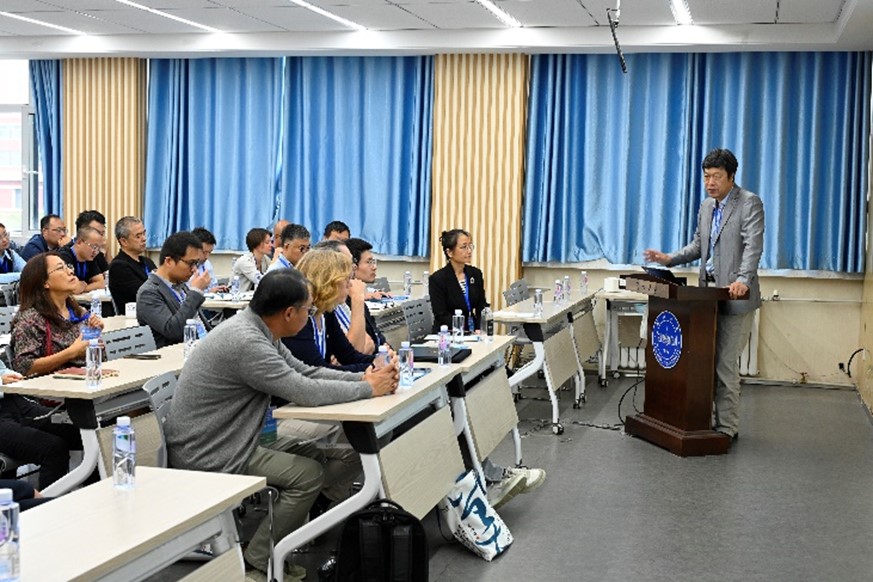
Academician Chen Fahu’s Speech
On behalf of the faculty and students, Li Yu welcomed the attending scholars from home and abroad and introduced the history and academic strengths of the School of Earth and Environmental Sciences at Lanzhou University. Since the establishment of the Department of Geography in 1946, significant academic breakthroughs have been made in several disciplines, including Quaternary geology, environmental change, environmental archaeology, and glaciology. These achievements are attributed to the university’s open and inclusive academic culture and the spirit of perseverance across generations of faculty and students.
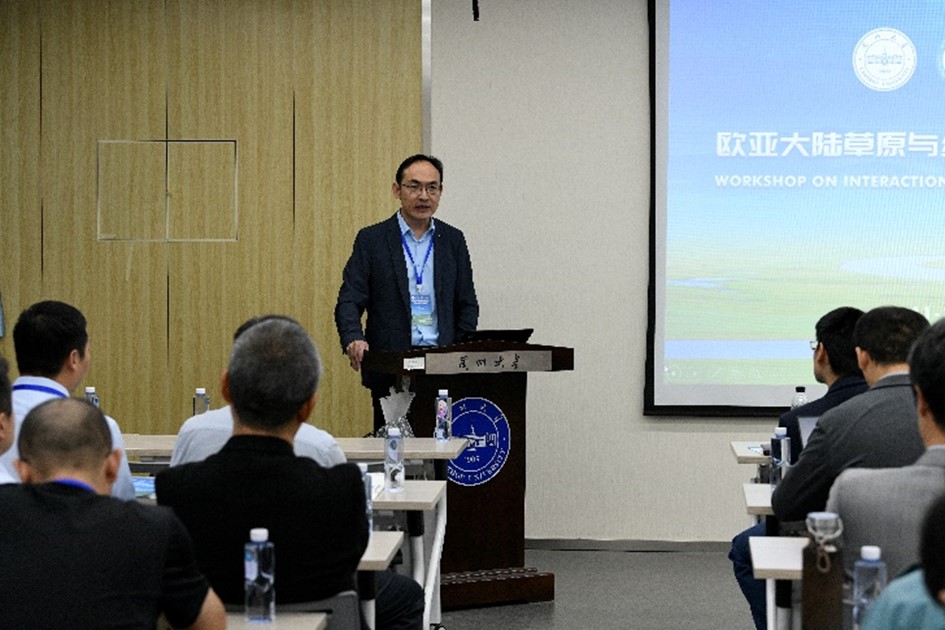
President Li Yu’s Speech
During the symposium, experts delivered 13 academic presentations centered on the conference theme. Professor Turbat Tsagaan and Professor Ursular Brosseder from the National University of Mongolia discussed Bronze Age archaeological findings in western and central Mongolia, emphasizing the connections between Mongolian sites and those in Central Asia, northern China, and Xinjiang. Professor Orlando from the University of Toulouse presented the latest research on ancient horse DNA, exploring the far-reaching effects of horse domestication and expansion on human history. Researcher Wang Guodong from the Kunming Institute of Zoology of the Chinese Academy of Sciences introduced the co-evolutionary history of humans and dogs in East Asia, including the origins and spread of dogs, as well as the collaborative evolution of humans and dogs across the Eurasian continent. PhD student Du Linyao from Lanzhou University discussed the spread and utilization of horses during the Chinese Bronze Age, revealing their history in northwestern China through zooarchaeology, carbon and nitrogen isotope analysis, and ancient DNA evidence. Researcher Wang Yucheng from the Institute of Tibetan Plateau Research showcased the latest advancements in environmental DNA applications in archaeology, particularly in their team's research on the domestication and spread of rice.
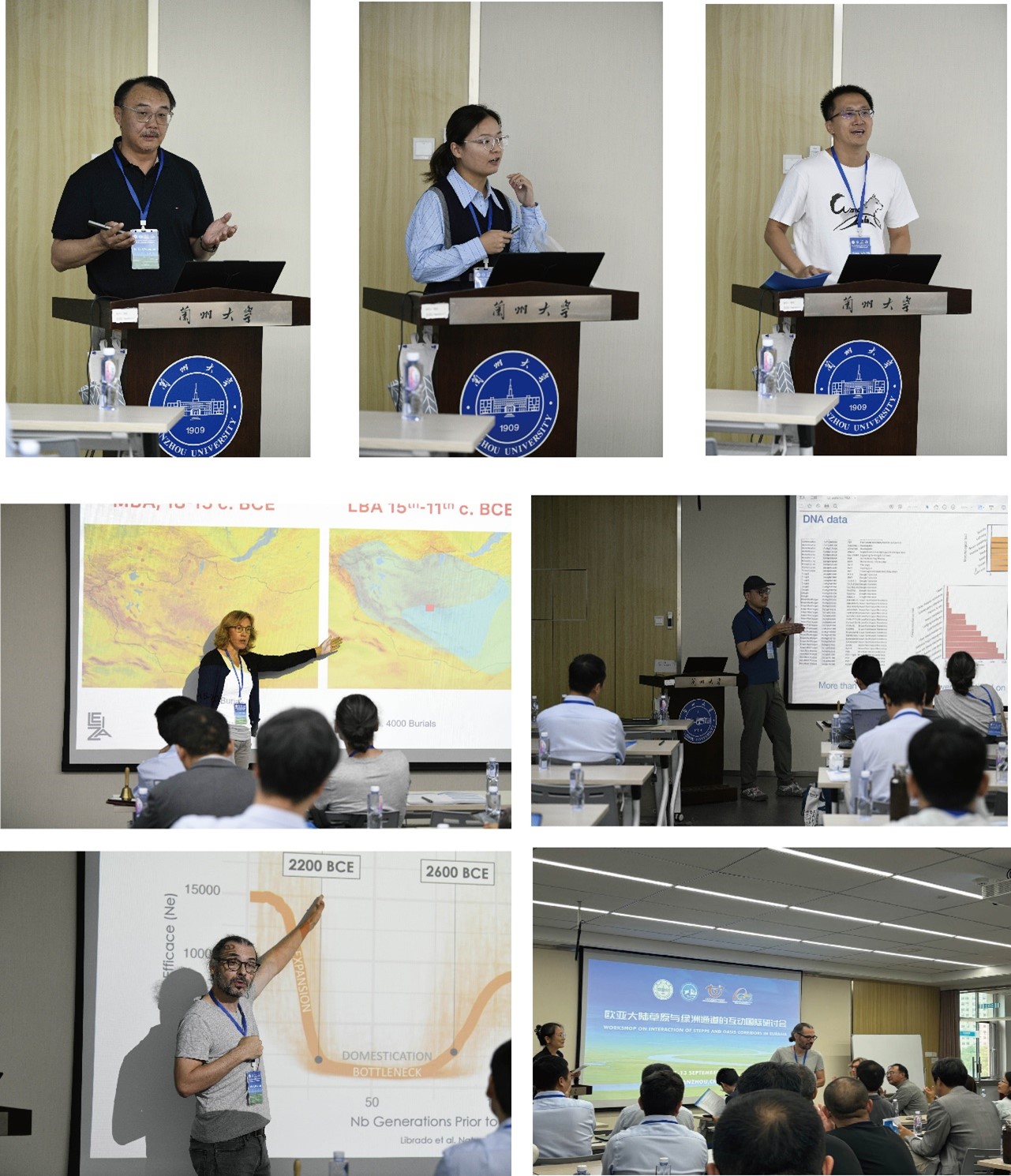
Presentations by Participants
Professor Gosden from the University of Oxford recounted the interactions between the Eurasian steppe and China during the first millennium BCE, focusing on the roles of bronze and horses in exchange history. Professor Hassan from the University of Tehran reported on Bronze Age settlements in northeastern Iran, discussing the impact of climate change on the decline of urban settlements in northeastern Iran and Central Asia. Professor Wang Chuanchao from Xiamen University explored the exchange and interaction between ancient nomads of the Eurasian steppe and East Asian populations from the perspective of ancient genomics, focusing on the genetic history and expansion of nomadic peoples. Dr. Liu Ruiliang from the British Museum spoke about the role of metals in exchanges between ancient China and the steppe, and the symbiotic relationship between metal and horse exchanges. Researcher Jia Xin from Nanjing Normal University discussed the origins and development of millet agriculture from the Neolithic to the Bronze Age in Inner Mongolia, illustrating its significant impact on regional history and culture. Dr. Huan Limin from the Leibniz Center for Archaeology in Germany explored the emergence of large-scale architecture in the Xihan River Basin during the first millennium BCE and its role in shaping social structure and cultural identity in ancient communities. Finally, Researcher Ailikun introduced the founding, vision, research topics, working groups, and major activities of the Trans-Eurasian Exchange and Silk Road Civilizations Alliance (ATES), inviting more domestic and international scholars to join. Participants engaged in lively discussions on the application of ancient DNA analysis in archaeology, the spread of cultural technologies, and human social development.
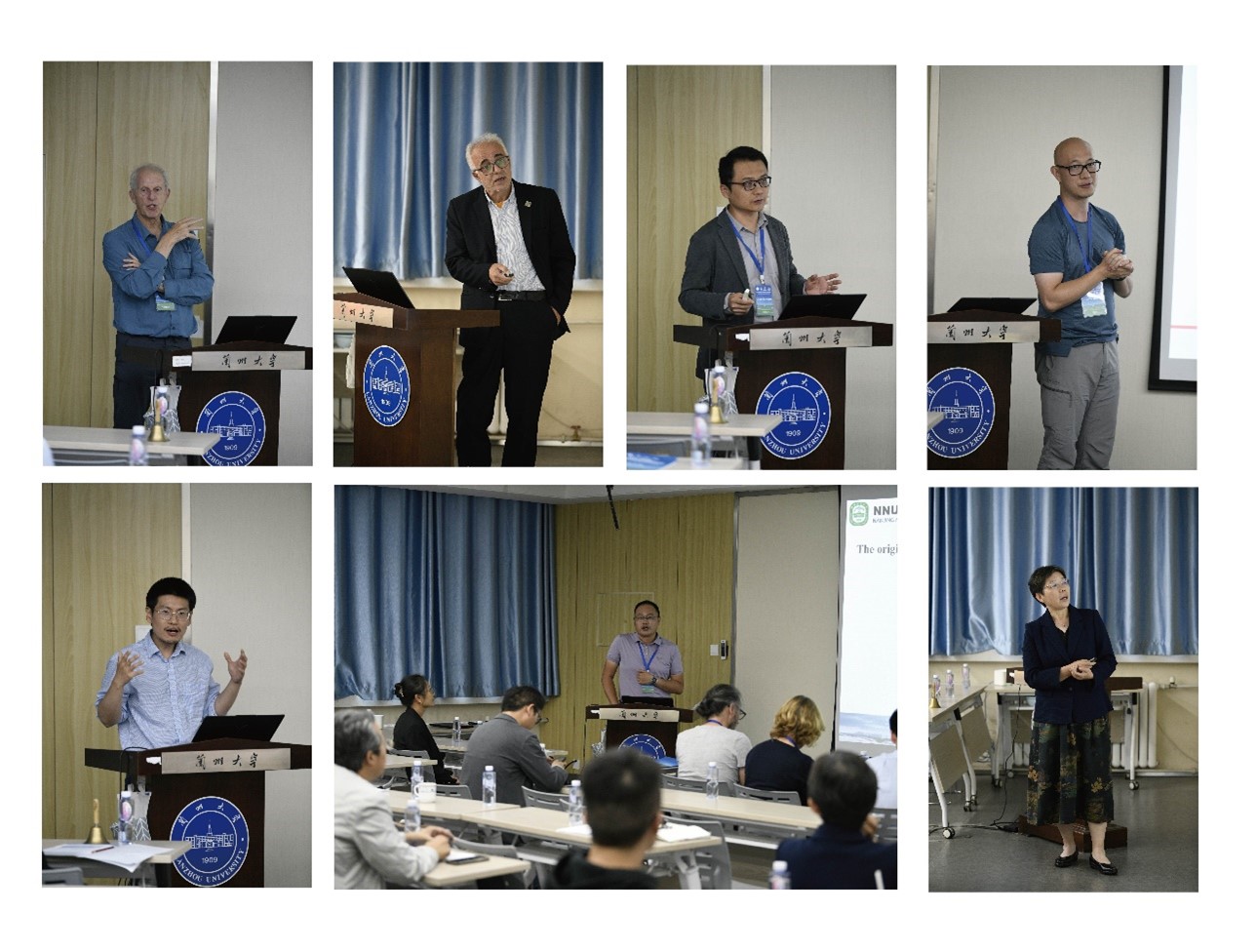
Presentations by Participants
Following the symposium, Professors Wang Xin and Ma Minmin led participants on a tour of the Key Laboratory of Western Environmental Education at Lanzhou University and the National Key Research Base for Bioarchaeology in Cold and Arid Regions.
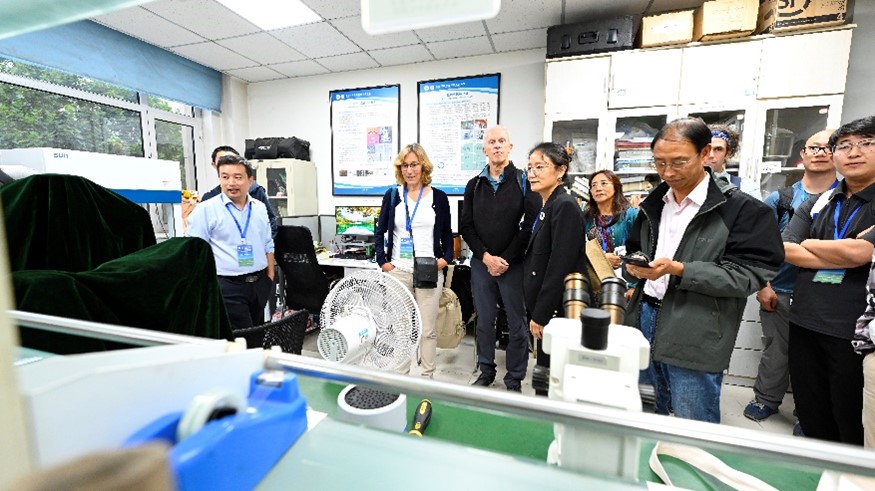
Laboratory Tour
Over 80 experts and scholars from 17 universities and research institutions, including the University of Oxford, Leibniz Center for Archaeology, University of Toulouse, British Museum, National University of Mongolia, Camberwell College of Arts, University College London, University of Tehran, Lanzhou University, the Institute of Tibetan Plateau Research of the Chinese Academy of Sciences, the Kunming Institute of Zoology, the Institute of Vertebrate Paleontology and Paleoanthropology of the Chinese Academy of Sciences, Xiamen University, Northwest University, Nanjing Normal University, Qinghai Normal University, and the Gansu Provincial Institute of Cultural Relics and Archaeology, participated in the symposium. They exchanged ideas on the processes and impacts of interactions between the Eurasian steppe and oasis corridors from prehistory to historical periods. Through interdisciplinary exchanges and intellectual collaboration, participants deepened their understanding of trans-Eurasian cultural exchanges. During the symposium, Lanzhou University’s environmental archaeology team reached cooperation agreements with relevant domestic and international scholars, and the team aims to continue collaborating closely with scholars worldwide to achieve further breakthroughs in the field of trans-Eurasian exchanges.